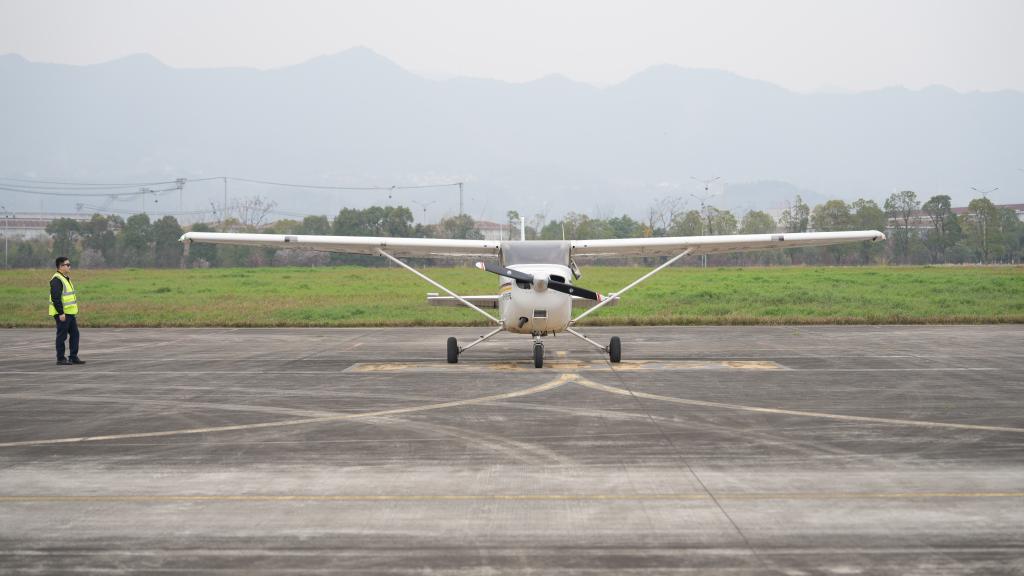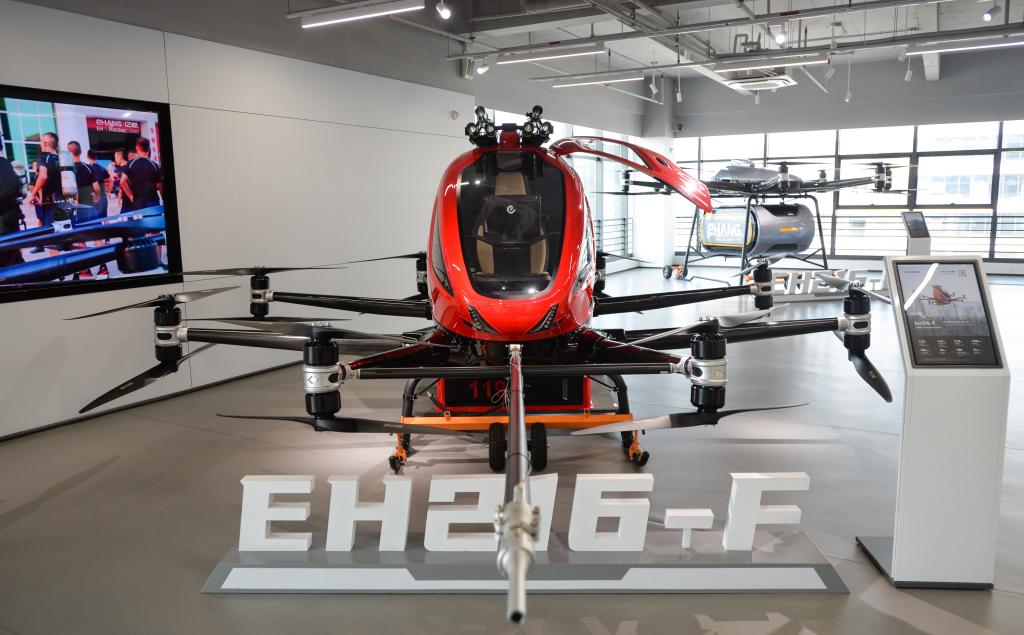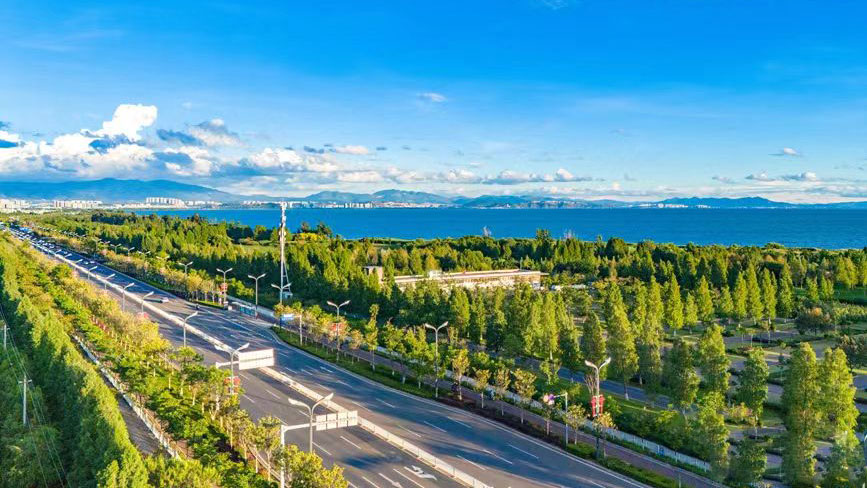Unleashing the vitality of China's low-altitude skies

This photo taken during a helicopter aerial tour on March 21, 2024 shows Wuzhizhou Island in Sanya, south China's Hainan Province. (Xinhua/Zhou Huimin)
BEIJING, June 18 (Xinhua) -- A novel scene is taking place during this year's lychee season, with drones shuttling back and forth on the first low-altitude air route connecting south China's Hainan and Guangdong provinces, bringing freshly picked fruit to foodies much faster.
Phoenix Wings, a cargo drone company under China's express delivery giant SF Group, initiated the interprovincial drone-delivery service for fresh fruit across the Qiongzhou Strait in late May, using the Fengzhou-90 drones developed by SF itself.
This new mode of transport is 70 percent quicker and 30 percent cheaper than conventional cross-sea transport, enhancing the freshness of the lychees and the economic benefits on all sides, according to Phoenix Wings.
In addition to the lychee delivery route between Hainan's capital Haikou and Guangdong's coastal city Zhanjiang, Phoenix Wings said it plans to develop more routes for the delivery of tea, cherry and other time-sensitive seasonal agricultural products.
The burgeoning drone-delivery field is a microcosm of China's growing low-altitude economy, which has led to the development and application of various types of innovative aerial vehicles for logistics, commuting, tourism and even sports.
The low-altitude economy covers a chain of industries, including aircraft research and development, infrastructure construction and operation, and services for flight activities.
It is estimated that the market size of the low-altitude economy sector will surge from over 500 billion yuan (70.3 billion U.S. dollars) in 2023 to 2 trillion yuan by 2030, according to the Civil Aviation Administration of China (CAAC).

This photo taken on March 13, 2024 shows a Cessna 172 aircraft at an airport in southwest China's Chongqing Municipality. (Xinhua/Li Fuyu)
FRESH VITALITY
Chongqing, a mountainous municipality in southwest China, intends to introduce diverse recreational activities related to low-altitude sports and tourism. These activities include parachuting, paragliding and sightseeing over the Yangtze River and the cityscape of Chongqing by balloon, helicopter and fixed-wing aircraft.
In March, it launched an interprovincial low-altitude air route to the city of Zigong in neighboring Sichuan Province for trial operation, with scheduled flights expected to start in the second half of this year.
Looking ahead, Chongqing plans to open at least two low-altitude air routes for tourists to enjoy aerial views of the city's landmarks.
As a pilot city of the country's low-altitude airspace management reform, Chongqing is also gearing up to extend low-altitude flights to the fields of logistics delivery, urban management and emergency rescue, according to the Chongqing economic and information commission.
Southern China's Hainan Island has recently become a hotspot for air-sports enthusiasts, as skydiving from either a helicopter or a fixed-wing airplane has surged in popularity among Chinese sports fans.
"In recent years, Hainan has deepened the reform of low-altitude airspace management, creating a favorable policy environment for air sports," said Ma Chao, a researcher at Hainan Normal University.

This photo taken on May 14, 2024 shows an EH216-F (Firefighting Model) pilotless aerial vehicle at an exhibition hall of EHang in Guangzhou, south China's Guangdong Province. (Xinhua/Li Renzi)
SCALING UP PRODUCTION
Innovative Chinese aerial vehicle developers are also energized by the surge of passion for the low-altitude economy. In April, drone maker EHang Holdings Limited obtained the production certificate for its EH216-S passenger-carrying autonomous aerial vehicle system from the CAAC.
It is the first such certificate issued in China, and also the first in the global electric vertical takeoff and landing (eVTOL) industry.
The production certificate is a milestone for EHang, which is thus allowed to mass produce EH216-S and advance commercial operations, said Hu Huazhi, founder and CEO of EHang.
The company will gradually expand production and delivery, bringing safe and reliable autonomous passenger aerial vehicles to the growing market, Hu said.
The Guangzhou Development Zone, in the capital city of Guangdong Province, where Ehang's headquarters is located, has launched the first batch of 10 low-altitude routes for express delivery and the city's first low-altitude medicine-distribution route.
"We are poised to bring more safe, automatic and environment-friendly air-traffic services to people, and promote the development of the low-altitude economy," Hu added.
Photos
Related Stories
Copyright © 2024 People's Daily Online. All Rights Reserved.









